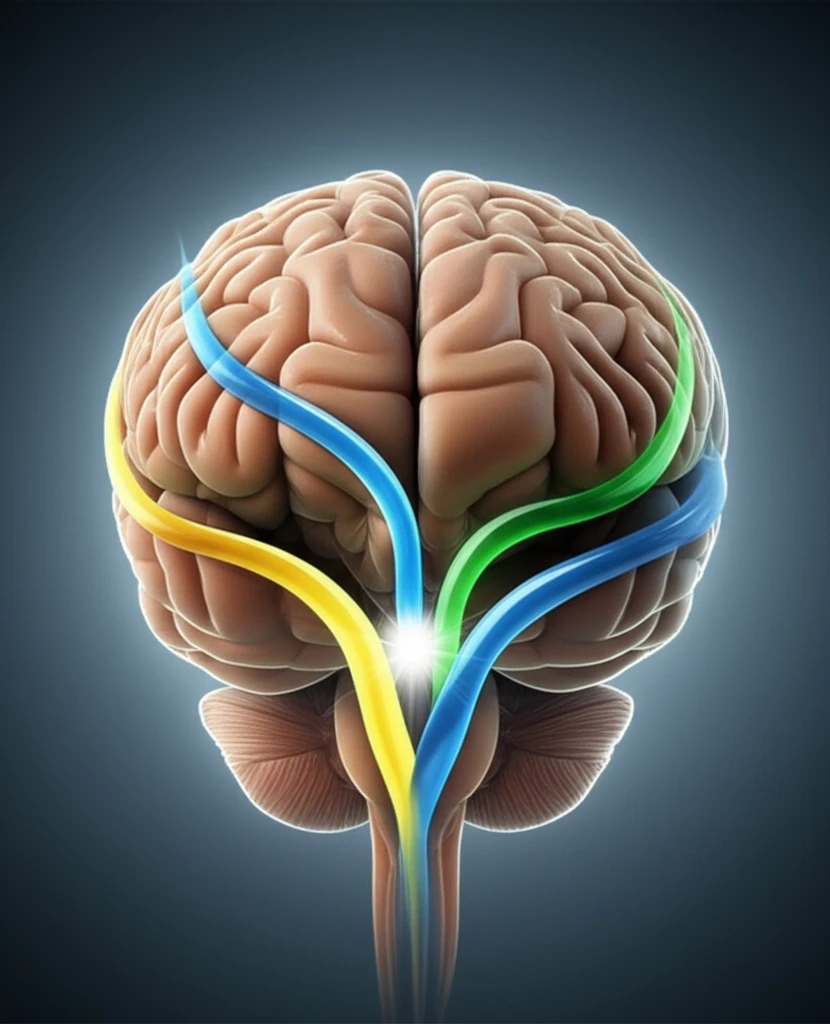
Unlock Your Mood: How Amitifadine Could Revolutionize Depression Treatment
"Discover the groundbreaking science behind Amitifadine, a triple reuptake inhibitor, and its potential to transform the future of mental health care."
Major Depressive Disorder (MDD) affects millions worldwide, casting a long shadow over their lives. Traditional treatments, like SSRIs, often fall short, leaving many still searching for relief. SSRIs, while a significant advancement, only help about half of those who try them, and remission (complete symptom relief) is even less common. Plus, the slow onset of action, typically 2-4 weeks, and potential side effects like sexual dysfunction and gastrointestinal issues, can be discouraging.
The next wave of antidepressants, SNRIs, aimed to improve outcomes by targeting both serotonin and norepinephrine. Yet, these dual-action medications have shown limited success and can still bring unwanted side effects. This has prompted scientists to explore even more comprehensive approaches to combatting depression.
Enter Amitifadine, previously known as EB-1010 or DOV 21,947, a unique 'triple reuptake inhibitor' that not only influences serotonin and norepinephrine but also dopamine. This innovative approach, hypothesized by Skolnick et al., aims to enhance mood, motivation, and cognitive functions often impaired by depression, offering a potentially more effective and well-rounded treatment option.
Amitifadine: A Deep Dive into Its Science and Potential Benefits

Amitifadine is designed to block the reuptake of serotonin, norepinephrine, and dopamine, three key neurotransmitters that play vital roles in mood regulation, motivation, and cognitive function. By inhibiting the reuptake process, Amitifadine increases the availability of these neurotransmitters in the brain, potentially leading to improved mood and a reduction in depressive symptoms.
- High Plasma Protein Binding: Amitifadine strongly binds to plasma proteins, ensuring that it remains in the bloodstream longer. Over 99% of the drug binds to human plasma proteins.
- Excellent Permeability: Amitifadine can easily pass through cell membranes, crucial for reaching its targets in the brain.
- Slow Metabolism: Amitifadine breaks down slowly in the liver, potentially leading to a longer-lasting effect.
- Brain Penetration: The drug effectively crosses the blood-brain barrier, allowing it to directly impact brain function. Studies in rats show that Amitifadine concentrates more in the brain than in the plasma.
The Road Ahead: Amitifadine's Future in Depression Treatment
Amitifadine presents a promising avenue for individuals seeking relief from depression. Its unique mechanism of action, targeting serotonin, norepinephrine, and dopamine, combined with favorable drug-like characteristics, offers hope for enhanced efficacy and reduced side effects. As research progresses, Amitifadine could become a key player in reshaping the landscape of mental health care, providing a more effective and personalized approach to treating depression.
